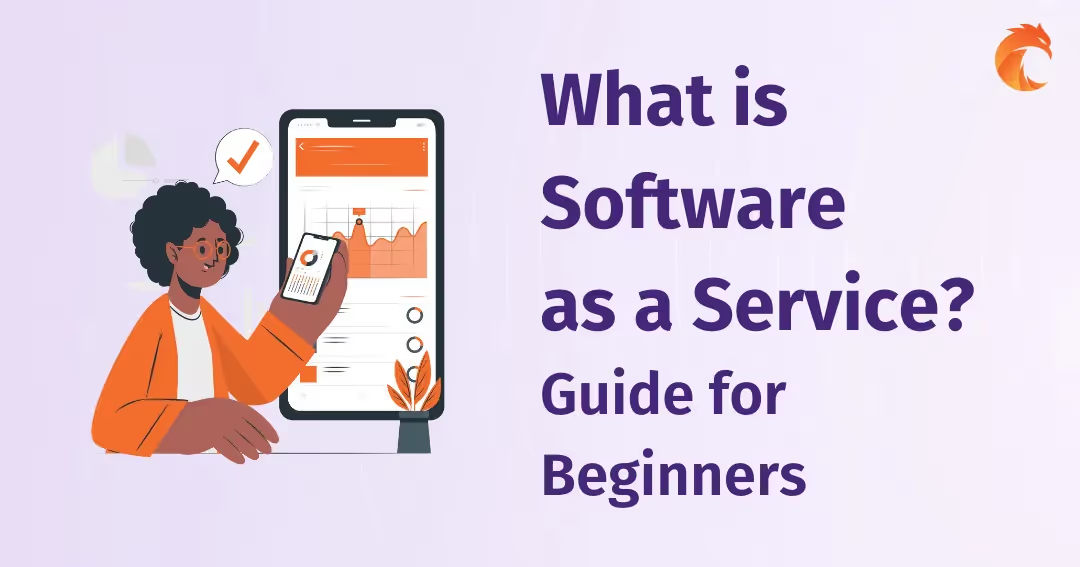Optimize Your Utilities: Utility Management Solutions


Do you need ways to improve the efficiency of your utility operations, reduce costs, and guarantee compliance?
Effective utility management solutions are vital for adapting to the fast-paced changes in the utilities sector. Good advanced software and custom solutions might be irreplaceable in optimizing every facet of utility management - from using predictive analytics for asset management to implementing advanced billing systems. Discover how you can transform your utilities management to meet current and future demands while maintaining operational excellence.
Key Takeaways
- Custom utility management software is essential for scalability, operational efficiency, and cost reductions, enabling proactive asset management and predictive maintenance through data analytics and AI.
- Mobile apps greatly enhance utility asset management by providing real-time data, optimizing field service operations, and improving preventive maintenance through user-friendly interfaces.
- A strategic decision between on-premise vs. cloud-based utility management software must consider cost, scalability, and cybersecurity, with cloud solutions often providing greater flexibility and cost-effectiveness.
Customizing Utility Management to Your Needs
In the utilities industry, the one-size-fits-all approach is as outdated as the paper grid maps once used to navigate city infrastructures. Today, utility companies vie for a competitive edge through utility management software that’s as dynamic as the market itself. Custom software in the power and utilities sector isn’t just a luxury; it’s a cornerstone for building a resilient, efficient grid ready to meet future demands.
Whether managing electric utilities or broader utility services, the push for customization is driven by the need for scalability and flexibility. Adaptive utility asset management software becomes the game-changer, enabling utilities to expand and contract their capabilities in sync with market currents, resulting in significant cost reductions without sacrificing operational excellence.
Asset Performance Management Customization
When it comes to asset management, the aim is not just to oversee assets but to elevate their performance to unprecedented levels. Customizing asset performance management systems is like fine-tuning a high-performance engine, ensuring every part runs at peak reliability. Predictive maintenance, powered by custom software, translates into a longer lifecycle for every piece of equipment, from transformers to turbines.
Using the power of data analytics, utility companies can now implement health index ratings for assets, providing a crystal-clear picture of when, where, and how to direct maintenance efforts. This data-driven approach, augmented by AI and augmented reality, leads to strategic maintenance decisions that nip potential issues in the bud and keep maintenance costs to a minimum.
Data Acquisition and Integration Strategies
In the area of utility asset management, asset data is the currency of choice. But how is this data best collected, integrated, and transformed into actionable insights? The answer lies in master data management (MDM), which serves as the backbone for integrating platforms and aligning definitions across the utility organization. With MDM, data from multiple sources is centralized, offering a single source of truth that empowers all stakeholders.
The role of mobile apps in this data-driven ecosystem cannot be overstated. Field technicians, equipped with these apps, become the frontline of efficient data acquisition and monitoring. As they check equipment and conduct surveys, the information they gather feeds into an optimized data management system that supports broader utility management goals.
Compliance and Regulatory Modules
Custom software solutions act as a guide, simplifying this complex journey. These customized systems ensure that compliance is woven into the very fabric of utility operations, creating a seamless blend of adherence and performance. By implementing supervisory control, utility companies can further enhance their regulatory compliance and operational efficiency.
By weaving compliance modules into utility management tools, companies can:
- Stay ahead of regulatory changes without compromising their pursuit of operational goals
- Safeguard against penalties
- Strengthen the company’s reputation and reliability in the eyes of customers and stakeholders
This proactive approach to regulatory challenges offers numerous benefits for companies.
Increase Operational Efficiency with Custom Solutions
Efficiency is a very important part of any successful utility operation. By centralizing utility operations and automating critical functions, these systems consolidate data from diverse departments, thus igniting swift and informed decision-making. These solutions optimize every facet of a utility’s operations, from resource allocation to implementing cost controls and adjusting operations to market demands.
The main benefit of custom utility management software lies in its automation capabilities. Automating decision-making processes leads to operations that are not only more efficient but also more adaptable to the changing tides of utility management. This results in a improved management of resources that ultimately propels utilities towards a future of innovation and growth.
Improving Work Order Management
Automated work order management software allow utility companies to:
- Keep efficiency and precision
- Tailor task prioritization to each job
- Address the most critical issues first
- Optimize processes and minimize errors
This shift from manual to automated processes transforms the organization of work orders, including data entry tasks. Seamless sharing and analysis of information improve communication and reduce errors. Moreover, personalized software solutions utilize data for predictive maintenance, ensuring that operational decision-making is not just efficient but prescient. By embracing data driven decisions, organizations can optimize their processes and achieve better results.
Advanced Billing and Payment Systems
As the utilities industry evolves, so too does the approach to billing and payments. Customized solutions with cutting-edge features redefine utility management, offering advanced web portals, interactive voice response (IVR) systems, and autopay options. These functionalities not only enhance customer experiences but also lead to cost savings for both providers and customers.
The adoption of these advanced features signifies more than just convenience; it represents a commitment to accuracy and financial prudence. With such tailored systems, billing becomes less of a chore and more of an asset, enabling utility companies to manage their finances with greater clarity and control.
Energy Usage and Monitoring Tools
In today’s world, managing energy usage is not merely a matter of efficiency; it’s a pillar of sustainability. Custom software solutions play a critical role in integrating renewable energy resources into the smart grid, equipping utilities with advanced analytics for superior grid management. These tools enable utilities to blend traditional power sources with renewable ones, leading to a more resilient and environmentally friendly energy infrastructure.
Real-time energy monitoring and analysis tools are the lenses through which utilities can view and manage consumption patterns across electricity, gas, and water sources. By identifying abnormalities, these tools aid in the optimization of energy use and lend support to net-zero initiatives, paving the way for a greener future.
The Role of Mobile Apps in Utility Asset Management
Mobile apps have revolutionized many aspects of modern life, and utility asset management is no exception. These apps offer supervisors remote oversight capabilities, enhancing coordination and decision-making for on-site crews. With geolocation features, managers can deploy field technicians more efficiently, while real-time syncing of mobile data keeps asset information up-to-date across all departments.
The overarching benefit of mobile applications in utility management is the empowerment of field technicians. With the ability to enter data directly from service sites, the quality and frequency of data collection soar. This immediacy and accessibility of information facilitate proactive maintenance planning, turning the unexpected into the anticipated.
Real-Time Data and Field Service
The immediacy of real-time data is a game-changer for field service operations. Mobile apps allow technicians to interact with work orders as events unfold, eliminating the delays and errors of paper-based methods. These digital tools provide essential data, such as technician schedules and customer information, at a glance, enhancing operational responsiveness.
Moreover, real-time GPS tracking within these apps optimizes travel routes, reducing time and fuel costs. Features like offline functionality ensure that productivity doesn’t hinge on network coverage, allowing technicians to update work orders and maintain momentum even in the most remote locations.
Enhancing Preventive Maintenance Practices
Preventive maintenance is the foresight that keeps utility operations running smoothly. Mobile apps bolster this by ensuring maintenance activities are scheduled and adhered to through automated alerts. Technicians, armed with user-friendly apps, can receive and fulfill tasks with efficiency, fostering teamwork and bolstering overall maintenance strategies.
The impact of mobile apps extends to inventory management as well. By providing real-time data on inventory levels, these apps reduce the likelihood of delays caused by parts shortages, ensuring that the wheels of maintenance keep turning without interruption.
User-Friendly Interfaces for Field Operations
The shift to touchscreen interfaces in utility asset management mobile apps represents a leap forward in user experience. These interfaces provide field technicians with simplified access to vital data and tools, enhancing data accuracy and ensuring high user adoption rates.
Such user-friendly platforms encourage engagement and improve field operations, allowing technicians to focus on the task at hand rather than on navigating complex software. The result is a workforce that’s not only more productive but also more satisfied with their tools, leading to better outcomes for both the utility and its customers.
Utility Management Software: On-Premise vs. Cloud Considerations
The debate between on-premise and cloud-based utility management software is more than a technological crossroads—it’s a strategic decision that impacts every level of utility operations. On-premise software offers the allure of direct control over infrastructure, while cloud solutions promise flexibility and scalability for a utility’s evolving demands. Each option comes with its own set of benefits and challenges that utilities must weigh carefully.
Integrating utility management software with cloud infrastructure unlocks benefits like improved flexibility, which is invaluable for accommodating growth. However, it’s not merely about following trends; it’s about aligning technology choices with organizational needs and future aspirations.
Assessing Infrastructure and Resources
Utilities must take a step back to assess their current infrastructure and resources. This evaluation is critical for identifying potential risks and establishing a clear technology solution and budget. The total cost of ownership is a key factor, especially when comparing on-premise solutions that require significant upfront investment to cloud services with their pay-as-you-go models.
Cloud-based solutions often emerge as the cost-effective choice for utilities with limited capital budgets. With lower initial costs and the elimination of maintenance expenses, these solutions offer a financially appealing alternative to the traditional on-premise approach.
Security and Support in Software Deployment
Cybersecurity is a paramount concern in software deployment, and both on-premise and cloud-based systems must be fortified with robust measures like data encryption and access controls. While on-premise solutions face physical security risks, cloud systems contend with internet-based vulnerabilities. The choice between the two often hinges on the quality of security controls offered by cloud providers, which frequently surpass internal IT capabilities.
Moreover, cloud security systems benefit from continuous management and maintenance by service providers, reducing the strain on internal IT resources. This outsourcing of cybersecurity efforts allows utility companies to focus on their core operations, secure in the knowledge that their data is protected.
Cost-Benefit Analysis of Deployment Options
When it comes to selecting the right deployment option for utility management software, cost is a crucial consideration. Cloud deployments often win in terms of lower initial setup costs, but they can lead to higher total ownership costs over time due to recurring subscription fees. On-premise solutions, on the other hand, may require an upfront investment but provide a sense of ownership and control that some utilities find invaluable.
The scalability factor also plays a significant role in the cost-benefit analysis. While on-premise solutions necessitate additional capital for upgrades, cloud services offer predictable expenses that aid in long-term financial planning. In the end, the right choice often comes down to a utility’s specific needs and strategic direction.
Partnering with Industry Experts for Custom Utility Solutions
The journey towards custom utility solutions is best undertaken with an experienced guide. Our company can help you face specific challenges and find specific solution for your needs. By collaborating with utilities, we offer software solutions that are not just effective but transformative, addressing the diverse and complex landscape of utility management.
Our commitment to aligning with clients’ technological ecosystems and workflows ensures that the solutions we develop are not only innovative but also integrative.
Collaboration and Co-Development Processes
The essence of our collaborative development process is:
- Active listening
- Precise needs analysis
- Engaging with utility clients through joint planning sessions and regular check-ins
- Creating a synergy that translates into solutions that are both innovative and perfectly attuned to our clients’ operations.
Our expert teams work hand-in-hand with client stakeholders throughout the development lifecycle, from concept to deployment. Field trials and iterative feedback loops ensure that the final product not only meets but exceeds the operational and efficiency goals established at the outset.
Ongoing Support and Software Updates
Our engagement with clients doesn’t end with the successful deployment of a solution; it’s a continuous journey of support and evolution. Utility management service providers must guarantee ongoing assistance, ensuring the seamless operation of deployed solutions. Regular updates are vital in keeping the software aligned with the ever-changing landscape of the utilities industry, maintaining its efficiency and relevance over time.
Summary
In the quest for utility management excellence, the path is clear: customization is key. From enhancing asset performance and improving operations to embracing mobile technology and making informed software deployment choices, custom utility management solutions offer a competitive advantage that’s hard to match. The success stories we’ve explored illustrate the transformative power of these solutions when developed in partnership with industry experts.
Utility companies that adapt and invest in custom software solutions stand to reap significant benefits, including improved efficiency, better compliance, and cost savings. As the utility sector continues to evolve, the importance of such bespoke solutions will only increase, offering a bridge to a future where sustainability and operational excellence are not just goals but realities.
Ready to scale your business with the right tech partner?
Related posts
Dive deeper into this topic with these related posts
You might also like
Discover more content from this category
Agile software development is nothing new, and agile methodologies have long been used in other industries as well - not only in software development. However, for many, this term is still not entirely clear.
“Building apps” is actually an extremely wide subject. From complex, machine learning assisted solutions for tough business cases, up to simplistic planners and message boards, you get what you put in.
Software as a Service (SaaS) provides the most extensive choice for business owners in the cloud market. Why? The site is easy to access - you only need an internet connection and a web browser.




